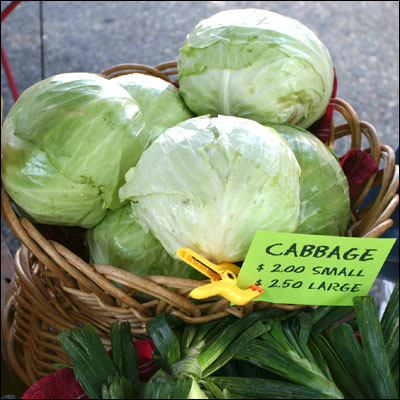
Cabbage is closely associated with St. Patrick's Day celebrations. In fact, it gets tucked into just about every other St. Patrick's Day food, from colcannon to Irish stew. (When I went to the grocery store yesterday, they had piled a huge mound of cabbages in the refrigerated case beside the stock of corned beef cuts.)
Cabbage was a staple food in Ireland in the 17th and 18th centuries, which is when we seem to be pulling all of our St. Patrick's Day celebration traditions from. In many ways, cabbage is an ideal crop for Ireland, because it grows well in cool, damp climates and northern latitudes. Cabbage also happens to be green, which makes it a natural for the St. Patrick's Day color scheme.
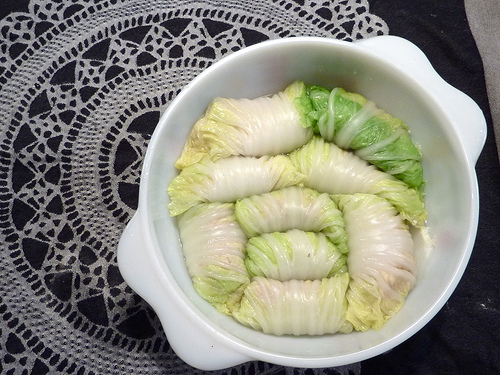
Image courtesy Flickr/kattebelletje
What even is cabbage?
Cabbage may look like lettuce, but it is a brassica, and therefore more closely related to broccoli and cauliflower than lettuce. Cabbage is dense and firm, and packed full of nutrition. Most historians believe that cabbage was originally cultivated in central and western Europe around 1000 BC by the Celts. It has been an important food crop to cultures around the world ever since.
Cabbage can be eaten raw, steamed, or cooked. And being sturdy, it stands up well to pickling. This ability to be preserved for later in the year made it a particularly appealing vegetable in the days before refrigeration was an option.
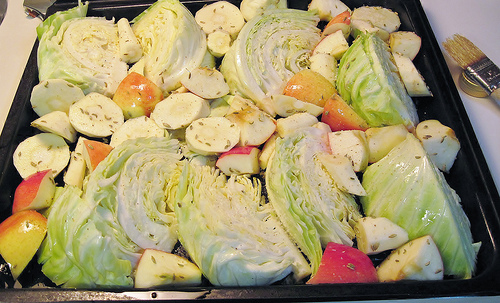
Image courtesy Flickr/Saucy Glo
Why does cabbage stink?
Despite all of its wonderful benefits and amazing properties, cabbage also tends to smell very bad. The leaves contain glucosinolates, which are a class of chemical that contain sulfur. The glucosinolates live inside the cells of the leaves, which is why a head of fresh cabbage has no appreciable odor.
However, when the cells are damaged, it releases hydrogen sulfur gas, with its characteristic "rotten egg" odor. The more the cells are damaged, the worse it smells, which is why people who hope to be able to cook the bad smell out are only making the problem worse.
Sadly, the same process happens inside the human digestive tract. As your body breaks down the cells of the cabbage to use for nutrition, hydrogen sulfur gas is released. There is only one way for that gas to go, if you know what I mean, and I think you do.
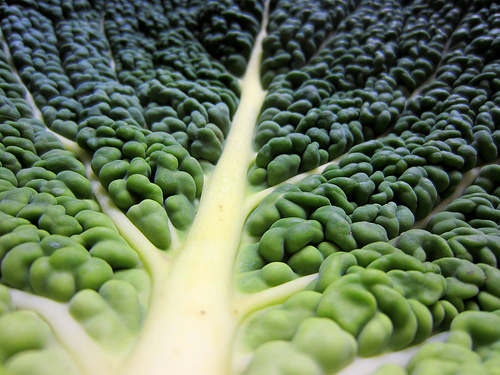
Image courtesy Flickr/cheesy42
Cabbage health benefits.
As a cruciferous vegetable, cabbage is chock full of nutrition. Cabbage has antioxidants, anti-inflammatory powers, and can even help prevent cancer.
Don't give the glucosinolates too hard a time, though. They are also probably the hero of cabbage. Recent research suggests that the glucosinolates in cabbage are what lends it its intriguing cancer prevention properties.
The more you cook cabbage, the more you release those glucosinolates. Thus, if you want to get the best health benefits from cabbage, you should cook it to the minimum. Eat it raw, or give it a quick stir fry.
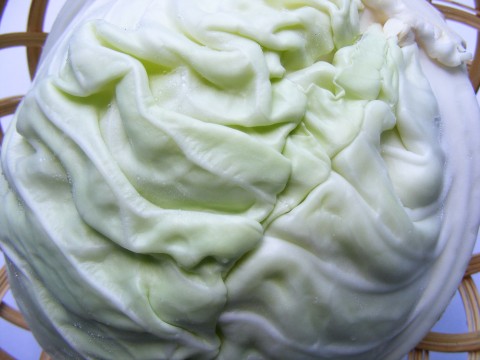
Image courtesy Flickr/Public Domain Photos
Cooking with cabbage
Cabbage is a versatile vegetable. It can be boiled, steamed, stir fried, sautéed , eaten raw (especially shredded into coleslaw - yum!), stewed, cooked in a slow cooker - you name it, you can do it with cabbage.
To shred cabbage, first slice the head in half. Lay the head, flat cut side face down, on the cutting board. Using a large sharp knife, you can now cut the cabbage in narrow strips across the end. You will probably want to cut out and discard the core.
A caveat: when steaming or boiling cabbage, it can get very watery. Cabbage feels tough, but it has a lot of water inside. Depending on how you plan to use your cabbage, you may want to adjust your cooking methods accordingly. Or plan on draining off a lot of cabbage water before you deploy your cooked cabbage.
Colcannon is probably my favorite St. Patrick's Day dish. It's basically just mashed potatoes with sautéed shredded cabbage. The cabbage gives it the illusion of being super healthy. Just don't think about all that butter! Here is a great recipe for traditional colcannon.
Corned beef and cabbage is another staple, as those folks at my local Safeway obviously know. This recipe for corned beef and cabbage has you sautee the cabbage on the stovetop with onions until they are caramelized and delicious.
Irish stew often has cabbage added. Are you a slow cooker fan? Here is a great recipe for an Irish brisket stew with Guinness.
Main image courtesy Flickr/Le Grande Farmers' Market

1 comments